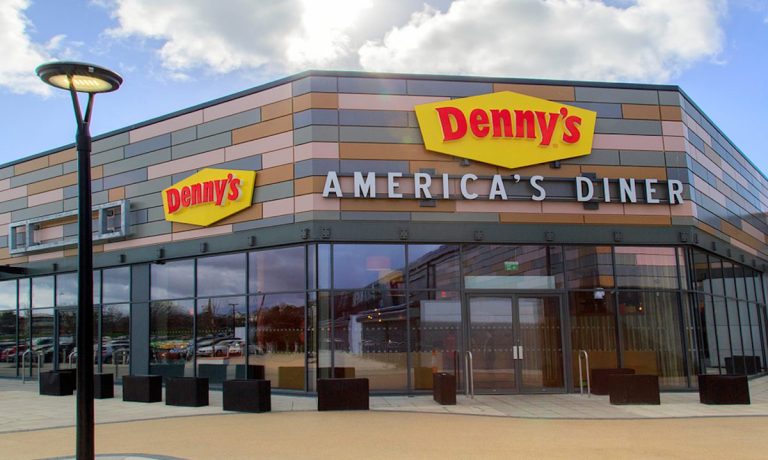Before the pandemic, digital ordering was primarily a tool for early adopters and restaurant enthusiasts. Now, following the turn to off-premise ordering prompted by COVID-19 social distancing measures, web and mobile restaurant sales have become the norm. It is not only the young consumers who grew up in the digital age taking advantage of these technologies — it’s everyone.
That is what Denny’s, the South Carolina-based full-service diner chain with more than 1,600 restaurants in the United States and abroad, has observed in tracking the usership of its digital platforms. The restaurant launched a new mobile app and desktop website late last month, with the new ordering platforms offering a more streamlined experience with increased personalization.
“What has surprised me most is that [adoption] spans all age demographics. We’re seeing the expected interest from Gen-Z and millennials, but also a strong preference from older generations,” John Dillon, chief brand officer and executive vice president at Denny’s, told PYMNTS in an interview. “Our off-premise business has boomed during the pandemic, and that’s largely because we’ve designed an experience that appeals to a cross-generational audience.”
Research from PYMNTS’ report, The Bring-It-to-Me Economy, created in collaboration with Carat from Fiserv, finds that demand from younger generations for digital ordering options is significantly higher than older consumers, although the latter is far from a negligible market. The census-balanced survey of more than 5,200 U.S. consumers found that while about three-quarters of Gen Zers, millennials and bridge millennials are now ordering food online, as are two-thirds of Gen Xers and 42% of baby boomers and seniors. Additionally, 58% of consumers, including 60% of Gen Xers and 43% of baby boomers and seniors, are ordering food online more often than they were before the start of the pandemic.
You may also like: Bring-It-to-Me Economy Ascends as Consumers Embrace Home-Centric Lifestyles
Getting Personal
Advertisement: Scroll to Continue
For a digital ordering platform to succeed, Dillon said, it must be “personalized, agile and seamless.” He noted that the chain’s updated ordering tools tap into user data to inform messaging and content. Additionally, consumers will play a role in shaping the in-app experience to their preferences.
“Guests will be able to personalize their profiles by adding their favorite meals and selecting the Denny’s restaurants they order from most frequently,” Dillon said.
With digital wallets built into the app, he noted, the company aims to make its loyalty program as easy to access as possible, integrating the points-earning feature into the payments process. As he put it: “There are no hoops to jump through.”
Included in the loyalty program are “personalized promotions” meant to be relevant to the individual user. Additionally, the digital platforms surface data-informed recommended items at checkout to drive additional spending.
The July-August edition of PYMNTS’ Delivering on Restaurant Rewards report, created in collaboration with Paytronix, found that 57% of table-service restaurant customers want access to customized coupons or discounts, making these the second most in-demand type of reward among table-service diners, following free food, which 72% said that they want.
Read more: Two-Thirds of Consumers Find Restaurant Rewards Impersonal
Past and Future
Denny’s most recent digital platforms follow about four years of web and mobile order fulfillment. This marks a contrast to the many restaurant brands that scrambled to become digitally available in March of 2020, sometimes settling for short-term “band-aid” solutions such as full reliance on third-party marketplaces, to the exclusion of laying the groundwork for long-term digital success.
Dillon explained, “We launched our Denny’s on Demand platform in 2017, so we were well-positioned to pivot when the pandemic arrived, and we’ve been able to use that early adoption of off-premise as a jumping-off point for further investment to fuel growth.”
He predicts that across the restaurant industry, off-premise ordering will only continue to become more popular “even after we reach the other side of this pandemic.” He predicted that more virtual brands will emerge to capture this digital demand, without the real estate and labor costs associated with running a full restaurant. Additionally, he noted that Denny’s two virtual brands, which launched earlier this year, have served as “revenue drivers, resulting in an incremental 3% of average weekly sales.”
Inside and Out
According to the company’s most recent earnings for the second quarter of 2021, the restaurant’s off-premise sales have doubled since before the pandemic. Still, they remain a relatively small fraction of the business, having grown from 12% to 24% of total sales. As such, Denny’s digital efforts will only succeed if they play into a broader, omnichannel strategy.
“The rollout of our new digital platforms represents a big step toward integrating the digital and dine-in Denny’s experience,” said Dillon.
Many major restaurant brands are finding ways to incorporate digital technologies into the on-premise experience, with contactless tools such as self-ordering kiosks and QR code menus and checkout making the experience more frictionless. It seems that for Denny’s, its digital intentions may also extend beyond off-premise ordering tools. In regard to digital technologies to enhance the in-restaurant experience, Dillon hinted that there is more to come.
“We’ll have more to share here shortly,” he said, “but we’re focused on technology that enhances three core areas: ordering, dining experience and payment.”




